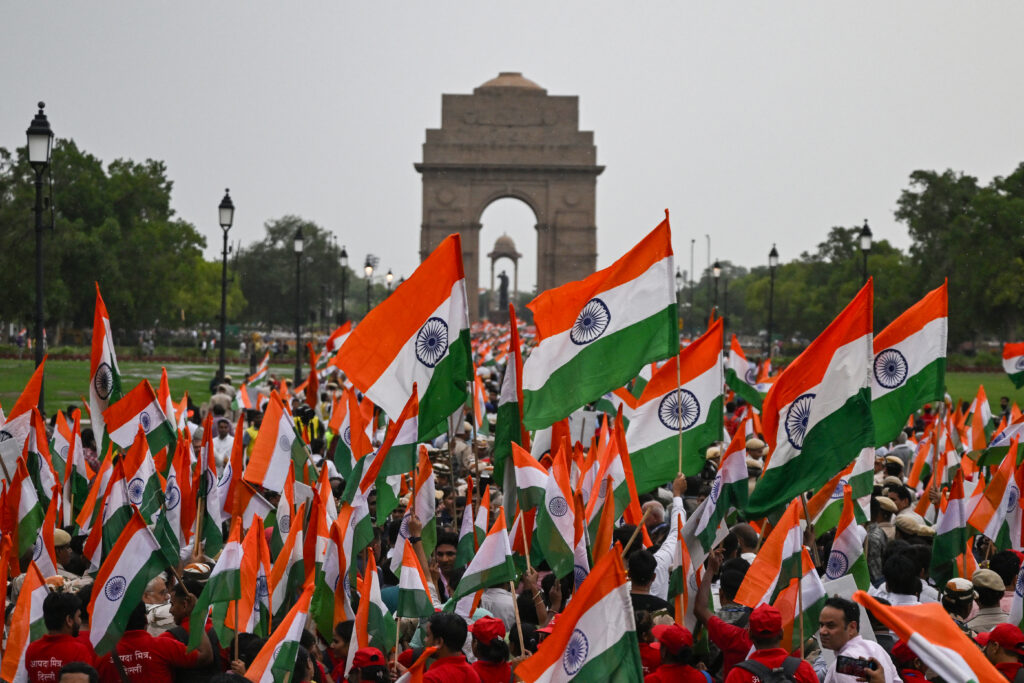Corse: trois ans d’inéligibilité pour Valérie Bozzi, maire de Grossetto-Prugna
Valérie Bozzi, maire divers droite de Grosseto-Prugna (Corse-du-Sud), a été condamnée mercredi à un an de prison avec sursis, 10.000 euros d’amende et trois ans d’inéligibilité assortis d’une exécution provisoire, pour favoritisme et prise illégale d’intérêt, par le tribunal correctionnel de Bastia.L’élue corse a été reconnue coupable pour la passation du marché public de la vidéosurveillance sur sa commune.Dans ce même dossier, les magistrats du tribunal correctionnel de Bastia ont condamné Sylvestre Ceccaldi, le compagnon de Valérie Bozzi, à six mois de prison avec sursis et 5.000 euros d’amende, pour recel de prise illégale d’intérêt. La même peine a été infligée à Farid Zouari, le chef d’entreprise qui avait emporté le marché, pour recel de favoritisme.Entre 2019 et 2020, un marché public de 330.000 euros avait été passé par la municipalité pour l’installation de 70 caméras de vidéosurveillance à Porticcio. Il est reproché à Mme Bozzi d’avoir attribué ce marché à l’entreprise de Farid Zouari alors qu’il avait, notamment, déjà connaissance du diagnostic sécurité, un document censé être confidentiel.La conseillère territoriale est aussi poursuivie pour avoir validé, dans le cadre de ce marché, l’installation d’une caméra destinée à surveiller la route menant à l’établissement de plage de Sylvestre Ceccaldi. Au moment des faits, sa paillote, l’Alta Rocca, avait fait l’objet d’un incendie criminel. Pour sa défense, Valérie Bozzi avait évoqué à l’audience un marché visant à “assurer la sécurité”: “Si je ne peux pas attribuer un marché parce que je connais la personne, je ne peux plus attribuer aucun marché en Corse”, avait plaidé cette avocate de profession, selon qui la commune n’a “pas payé la facture” pour la caméra en lien avec son compagnon.Le procureur, qui avait requis deux ans de prison avec sursis et cinq ans d’inéligibilité contre Valérie Bozzi, avait lui pointé “une proximité marquée par une réunion d’intérêts anciens” et “des relations douteuses”.Les avocats des trois prévenus avaient plaidé la relaxe de leur client.Lundi, dans un autre dossier, Valérie Bozzi avait déjà été condamnée définitivement pour prise illégale d’intérêts par la cour d’appel d’Aix-en-Provence (Bouches-du-Rhône), à six mois de prison avec sursis, 15.000 euros d’amende et trois ans d’inéligibilité.Dans cette affaire, passée par la Cour de cassation, elle a été reconnue définitivement coupable d’avoir signé des concessions de plage, le 27 novembre 2018, au bénéfice de la SAS Alta Rocca de son compagnon.Dans un communiqué de presse mardi, l’élue a annoncé qu’elle allait former un nouveau pourvoi en cassation dans ce dossier, cette fois pour contester le quantum de la peine prononcée.Dans un autre volet de cette affaire, où il lui était reproché d’avoir présidé un conseil municipal, le 28 octobre 2016, lors duquel le bail commercial sur un terrain privé communal avait été vendu à la même SAS Alta Rocca, Mme Bozzi a par contre été relaxée lundi.Dans son communiqué de mardi, l’élue a affirmé avoir “toujours travaillé dans le seul et unique intérêt de Grosseto-Prugna et de ses habitants”.









